

Video about the introductory agriculture class at the University of Delaware: youtube.com/watch?v=C_zL4tnvucg
Riding with technology
December 14, 2022
UD behind the wheel of teaching precision agriculture with hands-on experience
The two pieces of farm equipment loomed large and hard to miss in the expansive lot of Hoober’s Inc., an agriculture equipment supplier in Middletown, Delaware. Programmed and primed to ride, each sat ready for occupation by students enrolled in a University of Delaware course called Understanding Today’s Agriculture (AGRI 130).
The first, a shiny new red combine valued at more than $750,000 towered above its visitors on a beautiful Saturday in October. The second, an equally large tractor, its red paint and value somewhat faded from 20 years of reliable service, sat ready to roll.
It was time to go for a spin at a lumbering two miles per hour.
The equipment rides are a featured adventure promised to students who enroll in the course — the brainchild of Mark Isaacs, associate professor in the Department of Plant and Soil Sciences. Since the course’s inception, the backbone of the syllabus boasts hands-on experiences through four Saturday field trips beginning with a visit to an organic Delmarva poultry farm, a family-run orchard, the farm machinery and the UD Webb Farm.
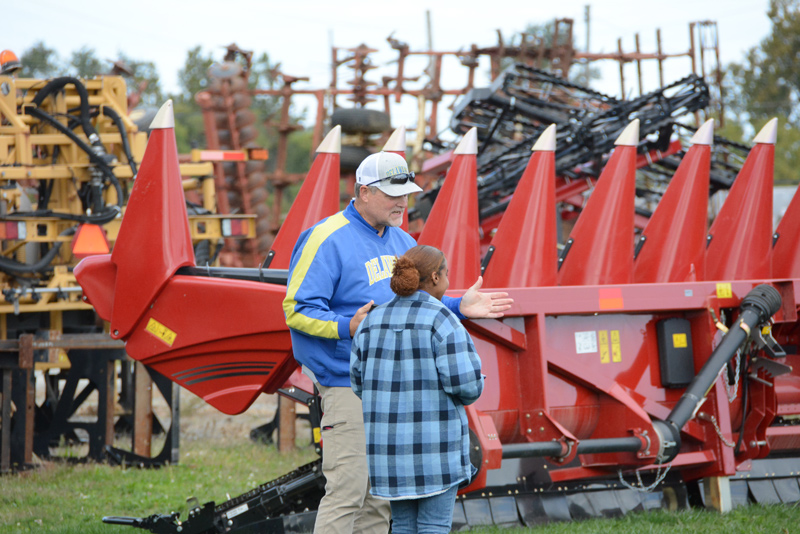
For several years, Hoober’s Inc. has hosted UD students, giving them an opportunity to drive a tractor or similar piece of farm machinery. Before the drive, students heard from Dave Wharry, Hoober’s precision director for southern Delaware stores, and Charlie Ervin, precision agriculture specialist. The pair discussed with students careers, challenges in equipment sales and service and the fast-paced innovations of precision agriculture they deliver to their agriculture and green industry customers.
Isaacs said it is important for industry professionals to relate their personal outlooks on what it takes to succeed in agriculture-related industries. Wharry and Ervin shared their career journeys, and to future prospects wishing to find a home in the industry, the skill sets needed to succeed and adapt, particularly in a post-pandemic economy.
“The biggest challenge we are facing right now is the supply chain,” Wharry told the students. “We cannot get the electronics. Something as stupid as an O-ring to seal up an electric motor that drives a $300,000 planter can sit for months because of a missing five-cent O-ring.” Wharry shared that new equipment inventory is low, and when something finally does arrive, it is quickly off the lot and headed to a family farm.
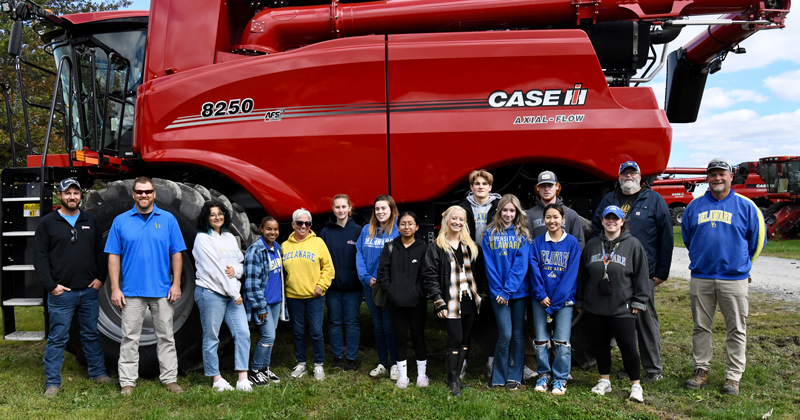
Students toured the showroom, mechanic shop, and once outside, watched a drone demonstration ranging from a $400 mini-drone helpful for field scouting to a $25,000 drone outfitted with spray technology. Each renders an important service to agriculture.
Then it was time to take technology to another level.
Half of the students lined up at the Case IH 8250 Axial-Flow combine while the other half queued up to drive the Steiger STX Series, a worthy 20-year-old classic tractor, equipped with auto-steer technology. As they climbed the ladder to the cab, students were mentored by Wharry on the combine or by Ervin who led from the tractor. After a brief orientation, the professionals turned the controls over to the students.
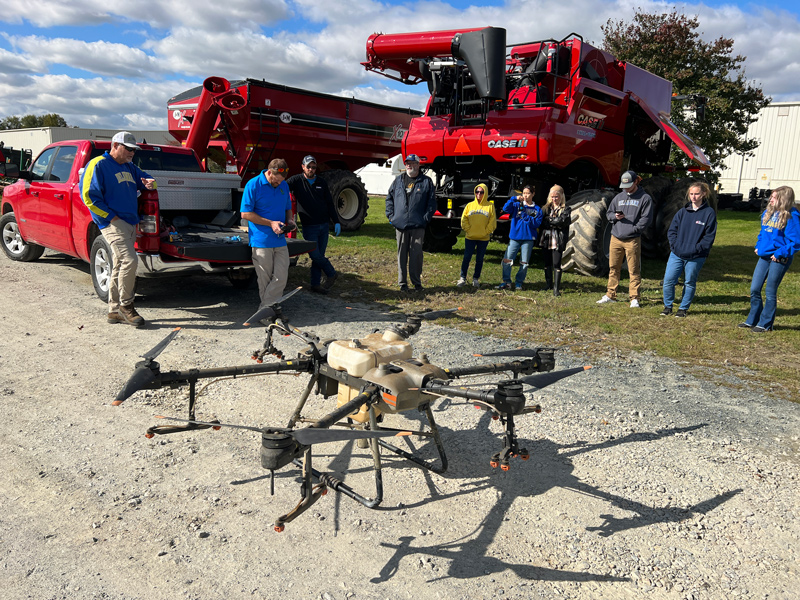
Sydney Tankard, a UD Class of 2023 food science major, stared nervously ahead as her turn approached with the tractor. All of it — the massive size, the engine roar, the climb to the cab and the ultimate responsibility and expense of the machinery made her apprehensive. She voiced her option to pass on the experience. But after some coaxing she relented. Wiser sentiment prevailed.
“It was amazing to see how the machinery is operated,” Tankard said. “I definitely got a new-found appreciation for how the farm functions regarding the harvesting of produce and products before potentially reaching processing establishments where food scientists come into play.”
Afterward, Tankard was all smiles. Far ahead of the auto industry, farm equipment has been steering itself for decades thanks to massive innovations in precision agriculture technology.
“As I was driving it, I saw how something seemingly straightforward like creating straight lines across the land actually takes a lot of work, and how long that actually must take the farmers,” Tankard said. “The price of this technology was also very eye-opening, as it really is a commitment and investment for these farmers to build their farms up the way that they strive to do.”
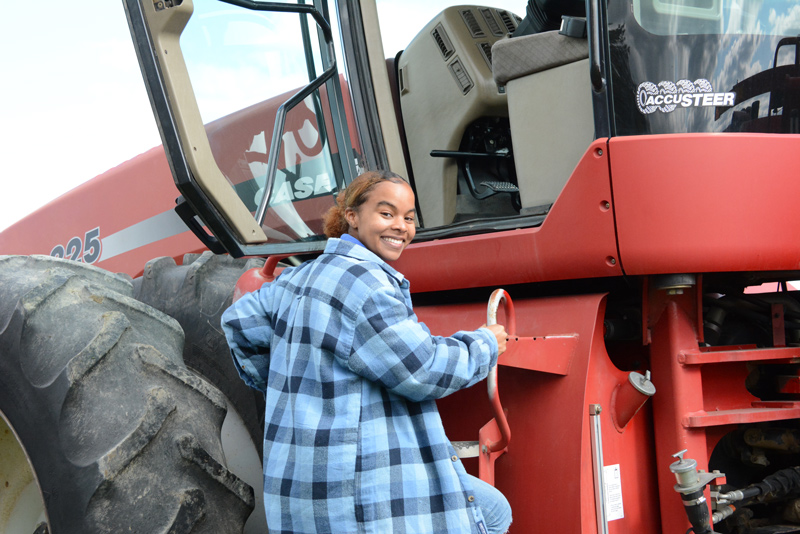
Matthew Chapman, a UD Class of 2024 agriculture and natural resources major, drew the straw to the combine line.
“This was the first time I have ever been in a combine,” said Chapman. “I was extremely impressed not only by the size of the machine but also by the technological advancements inside, compared to previous models we had the privilege to look at.”
It’s not every day one gets to assume the control of a $750,000 piece of equipment. Students discovered a new-found respect for farmers.
The student’s reactions were music to Isaacs’ ears. He carefully designed the course to elicit this exact type of reaction.
“I wanted students to experience firsthand the importance of this equipment to farmers, how precision agriculture technology has changed the game as well as the daunting cost and investment farmers take on when they purchase these essential pieces of equipment,” Isaacs said. “I could share this information in a PowerPoint, but when students’ hands grasp the wheel and then let technology take over, it is an experience they never forget.”
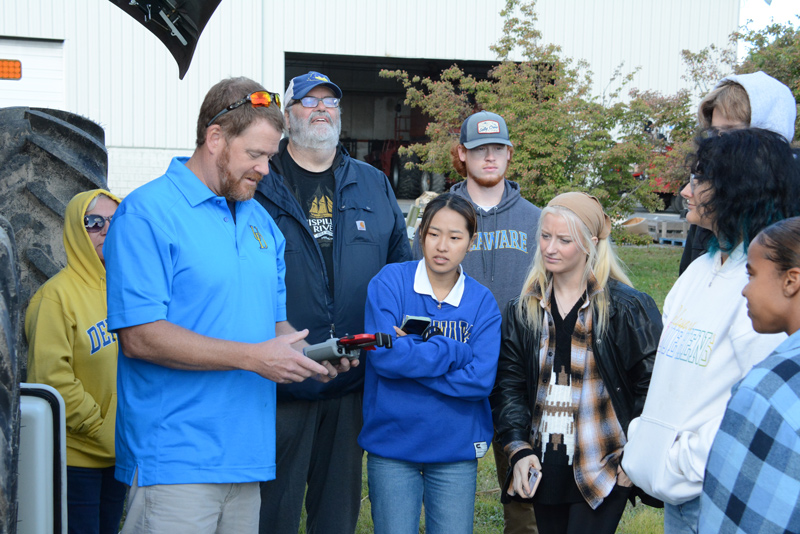
Contact Us
Have a UDaily story idea?
Contact us at ocm@udel.edu
Members of the press
Contact us at 302-831-NEWS or visit the Media Relations website

